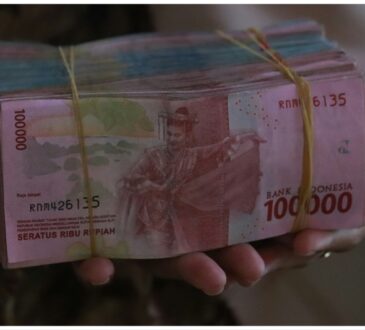
The US dollar weakened against major currencies on Tuesday, due in part to technical factors, taking a breather from a rally that took it to more than two-month highs fueled by expectations that the Federal Reserve will proceed with modest rate cuts over the next year and a half.

Analysts said the dollar’s recent uptrend still has some ways to go in the midst of geopolitical and election uncertainty.
“The U.S. dollar has modest gains left. There’s a lot of macro uncertainty that needs to be priced in,” said Jayati Bharadwaj, global FX strategist at TD Securities in New York. “We are just a few short weeks ways from the U.S. election, the biggest uncertainty. And the FX market has not priced in for that uncertainty at all.”
A string of U.S. data has shown the economy to be resilient, while inflation in September rose slightly more than expected, leading traders to trim bets on further large rate cuts from the Fed.
The U.S. central bank kicked off its easing cycle with an aggressive 50 basis-point (bp) move at its last policy meeting in September but market expectations have shifted to a slower pace of cuts, boosting the dollar.
Traders are now ascribing an 89% chance of a 25 bps cut in November, and an 11% probability of a pause by the Fed, keeping the fed funds rate at the 4.75%-5.0% target range, according to LSEG calculations.
In late morning trading, the dollar index, which measures the U.S. currency against six rivals, slipped 0.05% to 103.14, not far from 103.36, the highest level since Aug. 8 it touched on Monday. The dollar was boosted in part by comments from Fed Governor Chris Waller, who called for “more caution” on interest rate cuts ahead.
Fed repricing “has been the main engine for the dollar rebound, especially in relative terms to other central banks,” said Francesco Pesole, FX strategist at ING. “Waller’s comments have contributed to the stronger dollar this week.”
The euro hit its lowest level since Aug. 8 at $1.0885 ahead of the European Central Bank policy meeting on Thursday, where the central bank looks set to deliver back-to-back interest rate cuts, a move that seemed unlikely at its last meeting in September.
The pound rose 0.2% to $1.3080 in the wake of British labor market data showing pay grew at its slowest in more than two years in the three months to August, a pace that should allow the Bank of England to lower interest rates next month.
Expectations that sticky inflation would keep the BoE on a gradual rate cut path relative to its peers – the Fed and the ECB – had underpinned the pound’s outperformance this year. But shifting bets have pushed it lower in recent weeks, with the pound down over 2% against the dollar for the month.
YEN WEAKNESS ABATES
The U.S. currency’s rise has pushed the yen back toward 150 per dollar, especially after a dovish shift in rhetoric from Bank of Japan Governor Kazuo Ueda and surprising opposition to further rate hikes from new Prime Minister Shigeru Ishiba.
That has cast doubts as to when Japan’s central bank will next tighten policy, with a very slim majority of economists in a Reuters poll expecting BOJ to forgo raising rates again this year.
The dollar fell 0.5% against the yen to 149.09 yen, having risen to 149.98 on Monday, its highest since Aug. 1. So far this month, the dollar has gained 3.8% versus the Japanese currency.
Oil-exporting currencies were weaker after crude oil prices plummeted on media reports that Israel was not willing to strike Iranian oil targets, easing fears of a supply disruption in the Middle East.
Against the Norwegian crown, the dollar was flat at 10.802, while the Canadian dollar slipped to C$$1.38.
Meanwhile, the Australian dollar was 0.1% lower at US$0.6719, while the New Zealand dollar eased 0.1% to US$ $0.6092.
China’s yuan, both onshore and offshore, weakened to a one-month low against the dollar on Tuesday.




